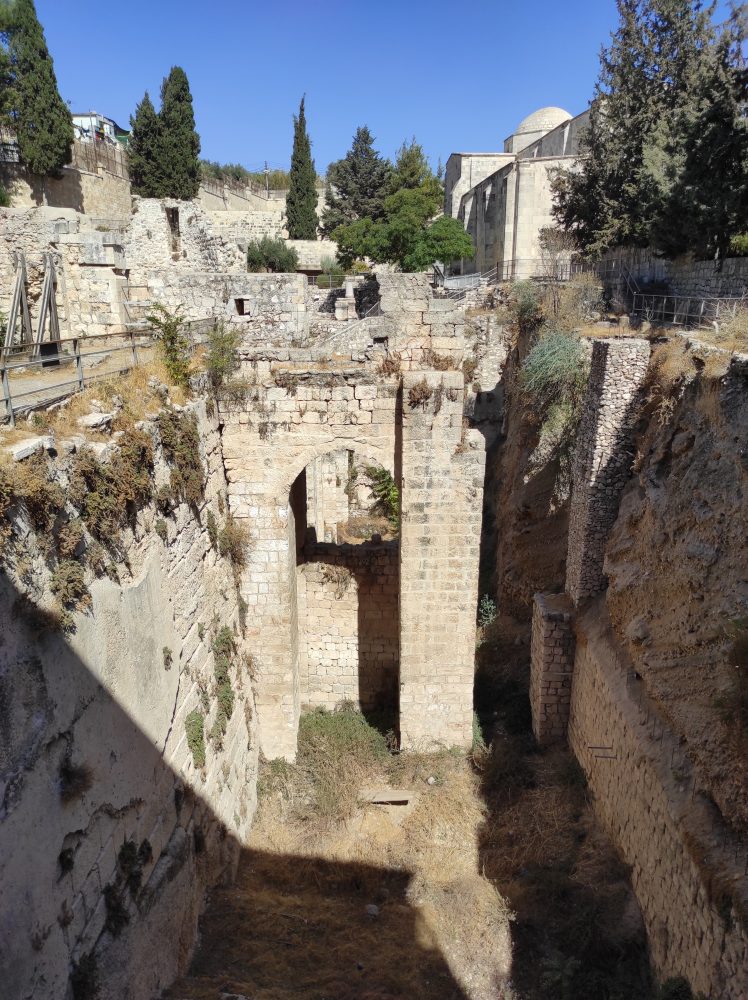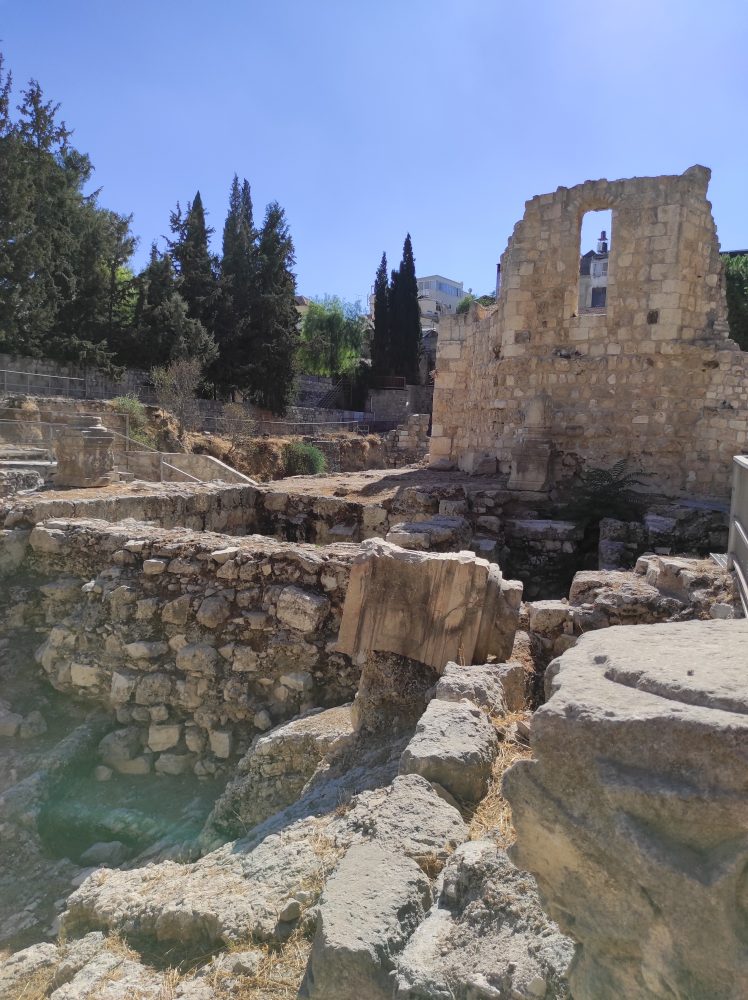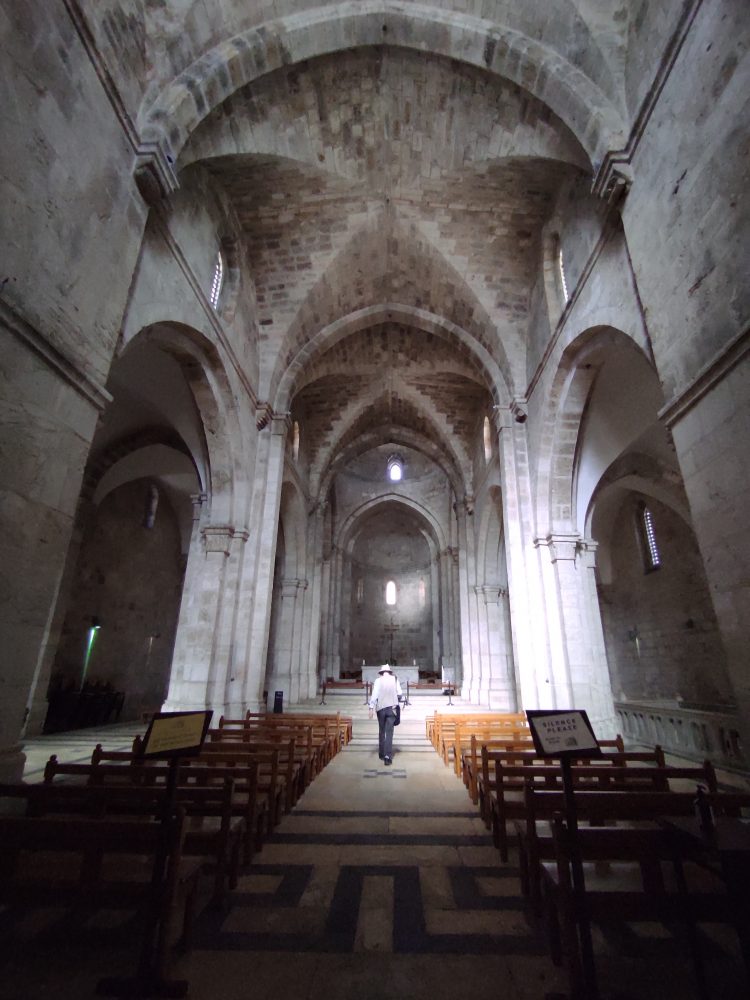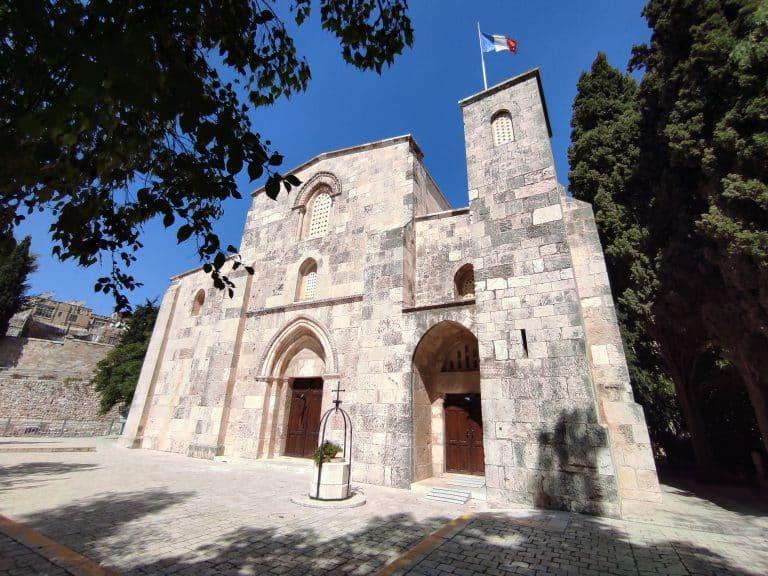A wonderful visit to the Bethesda pool and St. Anne's church at the end of the Via Dolorosa, a near the Lion's Gate in Jerusalem Old city.
At the end of Via Dolorosa, a few steps from the Lion's Gate, there is a small wooden door that opens onto a lush garden, with large trees and ancient capitals scattered around as decoration.
Waiting for us is Father Pol, who has been living and watching over the St Anne's complex for many years. There is a large Crusader-era church in here, a seminary and one of the most important archaeological sites in Jerusalem: the pool of Bethesda.
Pol, originally from Belgium, is a member of the White Fathers, a missionary order founded by the French Cardinal Lavigerie in Algiers characterised by its typical white tunic and very specific mission: to evangelise the people of North Africa.
They manage the church and the site, but once a year, on the occasion of the Nativity of Mary, the Franciscans celebrate mass here following the liturgy in French. The acoustics of the church are extraordinary, we can assure you, and the experience is definitely a great one.
Making the Bible tangible
The solemn chants are already a thing of the past: Father Pol, armed with a cane and a wide-brimmed hat, an elderly but sprightly explorer, leads us towards the museum storeroom housing the artefacts found during the archaeological excavations.
Many stone ossuaries embellished by skilled stonemasons, two Byzantine lead sarcophagi decorated with crosses, votive offerings depicting anatomical parts: at one glance you can read the entire history of this holy place.
"The aim of all our research in this place is only one: to make the Bible tangible", explains Father Pol as he switches on an old desk lamp and begins to leaf through an article taken from the four large stacks of volumes he has prepared for us as a bibliography.
We will spare you names, publication dates and scientific notes. Let us just say that, from the beginning of the research in 1865, with the restoration works and the archaeological excavations directed by Monsieur C. Mauss, until 2002, much has been said and published, especially about the pools of Bethesda.
One pool or two pools?
We are speaking about pools and this is not a mistake. The valley where St Anne's complex stands has been used since time immemorial to collect rainwater. It is in fact identified as the site of the 'probatic pool' described in the Old Testament.
"Probatic because it was used to wash the lambs that passed through the Sheep Gate nearby and were destined to be sacrificed in the Temple" explains Ft. Pol. "Probates" means "sheep" in Greek.
The evangelist John reports that, at certain times, an angel descended into the pool and stirred the water. Immediately afterwards, the first one to bathe in it was cured of all his illness. Bethesda in fact means 'house of mercy' and it was precisely mercy and healing that the invalids who flocked to the two pools sought.
It is not easy to tell which of the two was the Probatic Pool and which was the Bethesda Pool, or whether they were distinct from each other, but one thing is certain: the two pools, monumentalised at the time of Herod the Great (1st Century BC), were built at the same time, as confirmed by archaeologists.
From pool to pagan temple
The pool to the north was used for collecting and decanting water. The southern pool, with three flights of steps, almost like a mikveh, a Jewish ritual bath, was intended for pilgrims who wanted to immerse themselves, being purified and be healed.
The two huge cisterns are separated by a large dam with small canals. These were opened from time to time and fed pure water into the pool for ritual bathing. This feature may explain why John speaks of the 'stirring' of the water.
The Romans also considered the site miraculous and, following Hadrian's re-foundation of Jerusalem as the Aelia Capitolina, they built a temple dedicated to Serapis, or Asclepius, the pagan god of healing.
In the temple, located beneath the Byzantine basilica, a column decorated with a snake (the symbol of Asclepius, which we still find in pharmacies today) and many votive offerings were found. The most beautiful of these is perhaps a right foot with an inscription in Greek: pilgrims came from afar to be healed.

Bethesda pool 
The byzantine church 
Saint Anne's church
The Byzantine basilica
During the Christian era, a basilica was built over the pools, with a large mosaic atrium suspended above the water by four pillars. "It must have been a sensational architectural project for the time!" our guide says enthusiastically, pointing to the mosaic tiles that can still be seen.
The Martyrion, north of the basilica, is also finely decorated. It was used to house the most precious relics. A faithful reproduction of the colourful paving was made by the Mosaic Centre of Jericho and is now part of the new prayer room behind the church.
It was during the 6th Century AD that the tradition arose, supported by the 2nd century AD proto-gospel of James, that the home of Anne and Joachim was located here, a short distance from the pools.
Where is the real pool of Bethesda?
Shortly afterwards, in 614 with the Persian invasion, the basilica commemorating the miracle performed by Jesus and the origins of Mary was badly damaged.
A single nave was rebuilt and, in the following period, the great basilica was transformed by the crusaders into a monastery. Underneath it a crypt and two cisterns covered by a vault with five arches. It clearly recalls John: "There is in Jerusalem, near the sheep gate, a pool, called in Hebrew Bethesda, with five porticoes".
"The Greek Orthodox Catholics have no doubts", Pol began, leading the way to the cisterns with a torch, "and when they want to see the pool of Bethesda they come straight down here". There is still water down here and the torch is not enough to see the bottom of the cistern, 35 metres further on.
The Church of St Anne
It is time to go up and visit the Romanesque church built over the house of Anne and Joachim, identified in the crypt under the apse, which the faithful could access by a ladder even during the reign of Saladin, a period when the church served as a madrasa, a school of Koranic law.
The facade, in oriental style, still bears the dedication in Arabic. In addition to Anna and Maria, illustrious female figures have passed through this building: Arda, the Armenian princess and wife of Baldwin, founded a small church here, and Melisandra, Baldwin's daughter and Queen of Jerusalem, made it into a convent for nuns.
A small curiosity: these nuns owned a few shops in the city and even today, if you really carefully look for them, you can see some keystones engraved with "Saint Anne".
The church's austere but majestic setting is well suited to reminding us of its glorious past, its having been a place of healing, a place where a real miracle took place that is linked to both Jesus and Mary.
We are now departing from our exceptional guide and, once again, we are catapulted among the tuk tuks that speed along the Via Dolorosa. Here in the Holy City it is impossible not to follow in the footsteps of Christ, where every stone tells a story of Faith. Just observe. And listen.


















